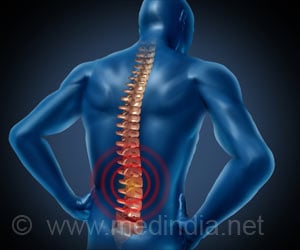Study has identified a new metric for heart function that will help in predicting the future risk of blood clots and preventing it.

- The current method for assessing risk of clot is using the ejection fraction which is the percentage of blood flushed from the heart with each beat.
- The ejection fraction does not appear to be an accurate predictor of risk of clotting in future.
- New study reveals that the mitral jet or the degree to which is a stream of blood shot through the mitral valve penetrates into the left ventricle of the heart is the factor that decides the risk of clots.
- This degree of jet penetration is evaluated by a using metric known as the E-wave propagation index (EPI), which is much more accurate than current methods.
Clots can occur whenever blood remains stagnant. Since the largest reservoirs of blood in the body are the chambers of the heart, they are the areas most at risk for generating clots.
Predicting the risk of developing clots is challenging for physicians. When patients suffer from a heart attack, they are given anticoagulant drugs to prevent clotting, but these drugs have adverse side-effects.
Currently, to predict which patients are at risk of a future clots, cardiologists use the ejection fraction, which is the percentage of blood flushed from the heart with each beat, and a few other factors.
For healthy individuals, with every heartbeat, 55%-70% of the volume of the blood is ejected out of the left ventricle. For those with heart conditions, the ejection fraction can be reduced to as low as 15% and the risk of stagnation and clots rise dramatically.
"Because we understood the fluid dynamics in the heart using our computational models, we reached the conclusion that the ejection fraction is not a very accurate measure of flow stasis in the left ventricle," said Rajat Mittal, a computational fluid dynamics expert and professor of engineering at Johns Hopkins University and one of the principal investigators on the research.
Researchers found that the degree to which a stream of blood shot through the mitral valve called mitral jet, penetrates into the left ventricle of the heart is the factor that decides the risk of clots.
If the blood does not travel deep enough into the ventricle, it does not get properly flushed out of the chamber and can potentially lead to clots, strokes and other dangerous consequences.
The findings were based on simulations performed using the Stampede supercomputer at the Texas Advanced Computing Center and validated using data from patients who both did and did not experience post-heart attack blood clots. The work was supported by grants from the National Science Foundation.
The degree of jet penetration is evaluated by a using metric known as the E-wave propagation index (EPI). The EPI index is much more accurate than current methods.
"The beauty of the index is that it doesn't require any additional measurements. It simply reformulates echocardiogram data into a new metric," said Rajat Mittal. "The clinician doesn't have to do any additional work."
"We showed very clearly that the ejection fraction is not able to differentiate a large fraction of these patient and stratify risk, whereas this E-wave propagation index can very accurately stratify who will get a clot and who will not," Mittal said.
The researchers captured detailed measurements from 13 patients and used those to construct high-fidelity, patient-specific models of the heart that take into account fluid flow, physical structures and bio-chemistry.
These models led to new insights into the factors that correlate most closely to stagnation in the left ventricle, chief among them, mitral jet penetration.
The team tested their hypothesis using data from 75 individual, in collaboration with clinicians, including lead author, Thura Harfi of Ohio State University. Among them:
- 25 patients were healthy
- 25 patients who experienced clots in their left ventricle
- 25 patients who had a compromised heart but who did not have any clots
Conclusion
Researchers required large computing resources to derive and test their hypothesis.
"This work cannot be done by simulating a single case. Having a large enough sample size to base conclusions on was essential for this research," Mittal said. "We could never come close to being able to do what we needed to do it if weren't for Stampede."
By applying the EPI metric to a larger database, the team plans to continue to test their hypothesis and to run a clinical study with prospective analysis.
"These research results are an important first step to move our basic scientific understanding of the physics of how blood flows in the heart to real-time predictions and treatments for the well-being of patients," said Ronald Joslin, NSF Fluid Dynamics program director.
"The potential for impact in this area is very motivating," Mittal said, "not just for me but for my collaborators, students and post-docs as well."
The findings are reported in the International Journal of Cardiology
Reference
- Rajat Mittal et al. The E-wave propagation index (EPI): A novel echocardiographic parameter for prediction of left ventricular thrombus. Derivation from computational fluid dynamic modeling and validation on human subjects. International Journal of Cardiology ; (2017) doi.org/10.1016/j.ijcard.2016.10.079
Source-Medindia















